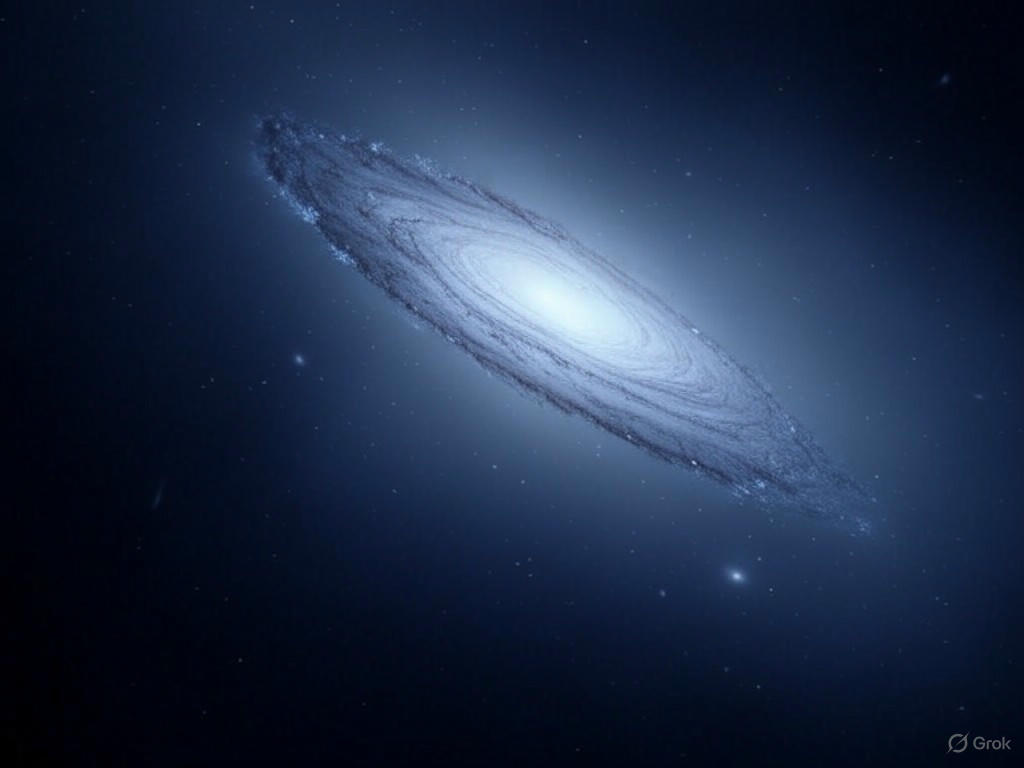Unveiling the Invisible: Dark Matter Swirls Around Galactic Arms
The cosmos holds secrets that continue to elude even the sharpest scientific minds, and among the most enigmatic is dark matter—an invisible substance that makes up a significant portion of the universe’s mass. Recent computer simulations have offered a tantalizing glimpse into where this mysterious material might be hiding, revealing ghostly trails of dark matter swirling around the spiral arms of galaxies. These findings, derived from cutting-edge models, provide a new perspective on how dark matter interacts with the visible structures of the universe, potentially guiding astronomers to its elusive presence.
Dark matter, unlike ordinary matter, does not emit, absorb, or reflect light, making it undetectable through traditional observational methods. Its existence is inferred through gravitational effects on visible matter, such as the way galaxies rotate or how light bends as it passes through cosmic structures. For years, scientists have theorized that dark matter forms a vast, diffuse halo surrounding galaxies, but the latest simulations suggest a more intricate relationship. These models show that dark matter may be drawn into dynamic patterns, tracing the elegant curves of galactic spiral arms. Like an unseen wind shaping the path of a kite, dark matter appears to follow the gravitational pull of stars and gas, creating ethereal whirls that mirror the galaxy’s visible architecture.
The significance of these simulations lies in their ability to predict specific regions where dark matter concentrations might be strongest. By mapping these ghostly trails, researchers can narrow down the search for indirect evidence of dark matter, such as subtle distortions in starlight or unexpected gravitational anomalies. This approach marks a shift from broad, generalized searches to targeted investigations, potentially accelerating the quest to understand this cosmic enigma. Furthermore, the simulations highlight the interplay between dark matter and the visible universe, suggesting that the two are more intertwined than previously thought. This could reshape our understanding of galaxy formation and evolution, as dark matter’s distribution may influence how stars and planets coalesce over billions of years.
As scientists refine these models, the next step involves pairing simulation data with real-world observations. Advanced telescopes and instruments, capable of detecting minute gravitational effects, will play a crucial role in testing these predictions. Collaborations across the globe are already underway to scan the spiral arms of nearby galaxies for signs of the invisible whirls described in the simulations. While direct detection of dark matter remains a distant goal, each discovery brings us closer to unraveling its nature—whether it consists of undiscovered particles or represents a flaw in our understanding of gravity itself.
The journey to comprehend dark matter is far from over, but these simulated trails offer a promising path forward. By illuminating the hidden dance between the seen and unseen, science inches closer to decoding one of the universe’s greatest mysteries. As we peer into the spiral arms of galaxies, we may soon catch a glimpse of the invisible forces that shape our cosmic home.


